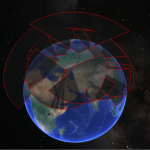Daily Report Archives
Established in December 1993, the Nautilus Institute’s *N*ortheast *A*sia *P*eace and *S*ecurity *N*etwork (NAPSNet) Daily Report served thousands of readers in more than forty countries, including policy makers, diplomats, aid organizations, scholars, donors, activists, students, and journalists.
The NAPSNet Daily Report aimed to serve a community of practitioners engaged in solving the complex security and sustainability issues in the region, especially those posed by the DPRK’s nuclear weapons program and the threat of nuclear war in the region. It was distributed by email rom 1993-1997, and went on-line in December 1997, which is when the archive on this site begins. The format at that time can be seen here.
However, for multiple reasons—the rise of instantaneous news services, the evolution of the North Korea and nuclear issues, the increasing demand for specialized and synthetic analysis of these and related issues, and the decline in donor support for NAPSNet—the Institute stopped producing the Daily Report news summary service as of December 17, 2010.

by Andrew De Wit 26 October 2015 II. Introduction The present article argues that the LDP’s green-energy proponents aim at revitalizing local economies through renewable energy, growing strategic sectors of the economy, bolstering national security (especially energy security), enhancing resilience in the face of natural and other disasters, as well as dealing with the threat […]
Go to the article

Deterrence: DoD exercise simulates home-grown terrorists
Governance: Sino-Japan tensions rise over China’s Nanjing Massacre memory application
Go to the article
“Perhaps no nation has at the same time both more diverse options for its energy and economic future and the potential to make those options reality than Mongolia.
“It will be up to Mongolian leaders, however, to make the difficult choice of a future direction for the Mongolian energy sector, a choice unique to Mongolia in the potential diversity of directions that are plausible for this sparsely-populated nation with a growing economy and many resources, but not, in general, dissimilar to the choices that many nations now face as they seek more climate-friendly energy paths.”
Go to the article
Deterrence: A frightening thought: China erodes America’s submarine advantage
Governance: In S. Korea, historical distortions Abe could only dream of
Austral Peace and Security: We should bomb Syria because…? (part 2)
Go to the article

Pine Gap’s initial and still principal importance to the United States lies in its role as a ground control and processing station for geosynchronous signals intelligence satellites. Nine geosynchronous SIGINT (signals intelligence) satellites have been operated by Pine Gap over the past 45 years. That role has grown as the satellites and their associated ground systems have developed in size, capacity and range of applications far beyond what was envisaged half a century ago – or understood by the host government that accepted the base at that time. During the ground station site selection process in 1966, one of the main criteria was that the horizon angle from the floor of the selected location and over the surrounding hills ‘should not exceed six degrees’. From Pine Gap’s latitude of 23.80° S and longitude of 133.74° E, this would allow connectivity (for both command and control and for data reception) with satellites stationed as far west as 60° E (or as far east as 153° W if ever required). The stations of the current three Orion SIGINT satellites controlled by Pine Gap make possible the collection of a wide range of signals across more than half the surface of the planet outside the polar regions – every continent except the Americas and Antarctica, and every significant region of contemporary US military concern. There is now just one US highly integrated geosynchronous signals intelligence satellite system, with comparable satellites operated by Pine Gap and Menwith Hill, with much greater capacities and much more focussed military roles than their Cold War equivalents.
Go to the article

by Ke Chung Kim 12 October 2015 I. Introduction Recently, Peter Hayes presented an interesting paper “Nuclear Threat and Korean Reunification” in this Policy Forum.[1] His arguments prompted me to recall fundamental arguments on the centrality of Korea’s environmental future in the rebuilding of North Korea and the reunification of Korea. Ever since the Korean vision […]
Go to the article
Deterrence: Russia successfully test fires topol missile
Governance: China labor rights: Factory workers protest in Hong Kong, amid restrictions on mainland
Climate Change and Security: Dutch government ordered to cut back emissions in landmark court ruling
Go to the article

by Kiho Yi and Peter Hayes with Joan Diamond, Steven Denney, Christopher Green, and Jungmin Seo 5 October 2015…
Go to the article

Deterrence: Revealed: Russia’s ambitious new ICBM early warning system
Governance: Democracy takes shape through street protests over security bills, says leading scholar
Go to the article

There is no single compelling factor to justify the bombings as inevitable, argues Peter Hayes. Rather, a series of decisions and events cumulatively drove the bomb forward from development to deployment at Hiroshima. The later nuclear attack on Nagasaki, moreover, was gratuitous.
Go to the article








